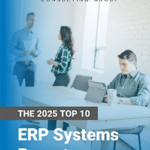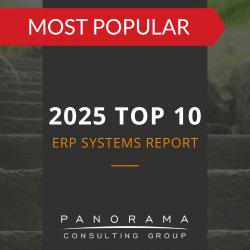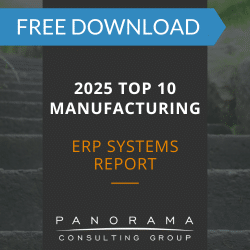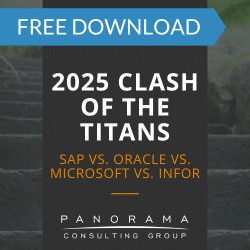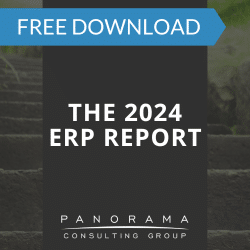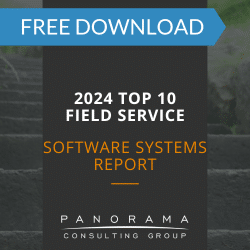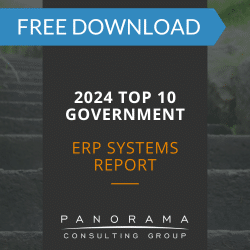Panorama’s ERP Blog
Digital Transformation & ERP Best Practices
Need some quick tips for your digital transformation or ERP implementation? You’re in the right place.

The Risks of Using ChatGPT for ERP Selection (Exposing AI’s Limitations)
AI is limited in its ERP selection capabilities as it’s unable to assess nuances such as implementation challenges and real-world use cases. ChatGPT cannot conduct sufficient vendor due diligence, as it lacks access to vendor financials, customer service history, and...

Change Management in Cloud ERP Implementations
Cloud ERP systems evolve continuously, requiring employees to adapt to frequent updates and workflow changes. Without proper change management, ERP updates can lead to confusion and employee resistance. Organizations should leverage microlearning strategies and...

How ‘Shadow IT’ Can Impact Your ERP Project
Unapproved applications create data silos that undermine ERP integration, leading to inconsistent reporting, duplicate records, and inefficiencies. Shadow IT introduces security vulnerabilities by bypassing enterprise security controls, increasing the risk of data...

Why Do Modernized Organizations Still Struggle with Digital Document Fragmentation?
Digital document fragmentation remains a major challenge, even for modernized organizations, leading to inefficiencies and compliance risks. Manufacturing and healthcare face heightened risks, with production errors and patient safety concerns stemming from poor...

Innovative Strategies for ERP and Enterprise Application Integration
Scalable integration architectures simplify connectivity across ERP systems, ensuring consistent data flow and reducing operational inefficiencies. Low-code development platforms streamline integration workflows, which accelerates deployment timelines and reduces...

The Impact of Internal Politics on ERP Projects
Internal politics, including departmental conflicts and power struggles, are a leading cause of ERP failures, often overshadowing technical challenges. Misaligned goals, fear of change, and leadership turf wars create resistance, delaying ERP projects and leading to...
Panorama’s ERP Blog
Welcome to the ERP Blog from Panorama Consulting, your central source for cutting-edge information and insight in the enterprise resource planning industry.
Digital Transformation and ERP Best Practices
Are you in the market for some quick tips to expedite your digital transformation or ERP implementation? Then you’ve come to the right place. As leaders in ERP consulting, Panorama is excited to provide valuable details about digital transformation and ERP best practices to those looking to expand their understanding of these vital practices and put them to use.
Enterprise resource planning (ERP) is a huge concept that essentially boils down to software that manages some of the most important day-to-day operations of businesses, such as accounting, project management, and procurement. What makes ERP so valuable is the fact that it facilitates a flow of information between these different processes and departments for a level of consistency that would not otherwise be possible. The result is an organization whose functions are more streamlined due to the use of a central database; employees from entirely different areas of a corporation can trust that they’re relying upon the same information and following the same practices when ERP is utilized.
There are many benefits for businesses that utilize ERP, including decreased costs of operation, boosted insights, greater efficiency, and an overarching sense of collaboration which serves to improve morale and company culture, so it’s no wonder that so many organizations invest time and resources into robust ERP efforts.
To stay up to date with current trends in ERP and to get more out of your current system, follow our blog.
If you aren’t currently investing in ERP for your organization, or if you feel that you aren’t properly leveraging this technology for your success, contact us to speak with one of our experts!
